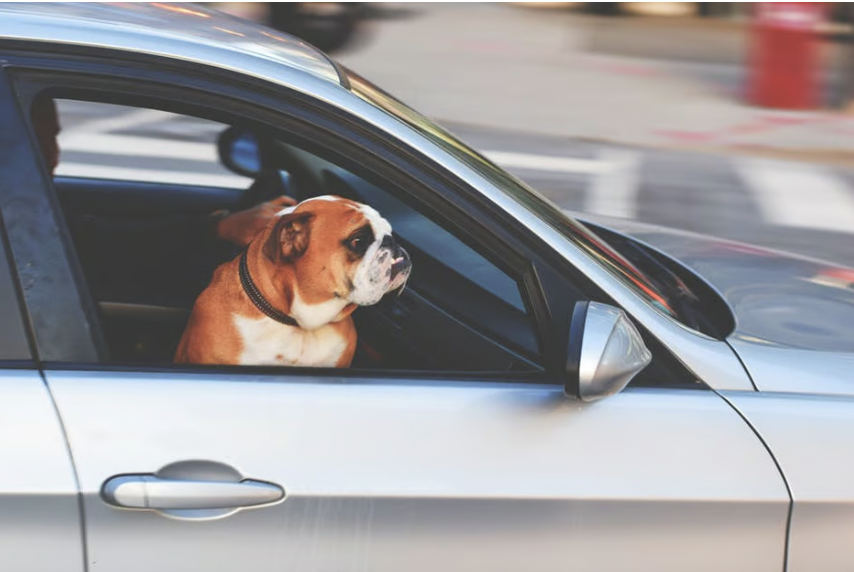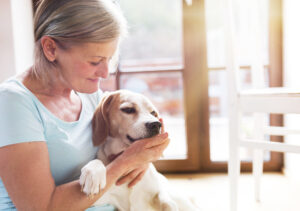Does your furry friend whine, urinate, or panic during car rides? They’re not alone. In fact, over 70% of dogs display anxiety.
About 11% have a fear of novel situations, such as car rides.
Read on to learn more about dog anxiety in the car symptoms, prevention, and treatment. With these tips, you can help ease dog anxiety to make trips easier on you both!
What Is Dog Anxiety?
Dog anxiety (or car anxiety) is exactly as it sounds: fear, stress, or anxiety that occurs while in a moving vehicle. Dog travel anxiety can range from mild discomfort to a full panic attack.
If you plan on traveling with dogs, it’s important to recognize their pet anxiety before you start driving. Otherwise, driving with an anxious dog could become a dangerous distraction while you’re on the road.
Causes
Your dog may start associating car rides with something bad happening. For example, maybe they’ve only been in a car to visit the vet. Perhaps they were abandoned and associate car rides with an animal shelter.
Once your dog develops that association between car rides and bad experiences, their anxiety will grow. They’ll begin associating car rides with going somewhere potentially dangerous or stressful.
In some cases, there’s no root cause. Your dog might see cars as uncomfortable or scary.
Try to see the situation from their perspective. The car’s constant movement could make their footing unstable. They might encounter scary noises and overwhelming stimuli. The motion might even make the carsick.
If you’re struggling to understand the reason behind your dog’s anxiety, consider working with a pet communicator. They’ll personally research customized solutions for your pet.
Symptoms
Remember, it’s important to spot signs of pet anxiety before you begin traveling with dogs. Potential signs of their anxiety might include:
- Shaking and trembling
- Pacing or restlessness
- Reluctance to get into the car
- Barking, panting, or whining
- Excessive drooling
- Yawning
- Lip smacking or licking
About 50% of dogs exhibit anxious behaviors like hyperactivity and excessive barking.
However, only 36% of dog owners can spot signs of poor mental health.
Your dog might begin experiencing these symptoms due to motion sickness. Some dogs, however, only show mild symptoms or signs of distress.
If your dog begins experiencing these symptoms, try to remain patient with them.
Prevention
Before your next car ride, try preventing your furry friend’s anxiety.
If they’re new to car rides, try to help them view the car as a fun place. You could keep their anxiety from developing in the first place. Two of the top strategies include counterconditioning and desensitization.
Both strategies avoid forms of punishment. Instead, they help dogs feel safe.
Desensitization
Try to avoid overwhelming your dog with a full-length car ride. Instead, slowly introduce them to car rides to ease them into the environment.
Begin by sitting together in the car. Keep your vehicle parked and turned off.
Consider playing with your dog near your parked car. Give them attention and delicious treats. Then, invite them to sit inside the car.
Continue offering your praise and treats. Don’t shut the door (which might make them feel trapped.
Repeat these steps another day. This time, shut the door. Consider turning the engine on briefly, then turning it off.
With time, you can start adding short trips to your dog’s routine. Consider driving to the closest stop sign and back. Gradually increase the length of these rides.
Keep giving your dog praise, playtime, and treats.
If your dog shows signs of anxiety, you might be moving through this process too quickly. Go back a step and try again.
Try to remain patient.
Counter-Conditioning
Counter-conditioning will help your dog form a positive association to car rides. You can teach your dog to view the car as a safe, fun place.
As with the desensitization process, make sure to offer your dog playtime, praise, and love. Show them the car is where good things happen.
Once your dog is comfortable with longer car rides, start taking them to fun places!
For example, to pick up a new toy or to the local dog park.
Consider recruiting a friend to help. They can drive while you give your furry friend love and attention.
Minimize Motion Sickness
With either strategy, it helps to minimize your dog’s motion sickness as much as possible.
Otherwise, minimize their motion sickness by:
- Keeping the car cool
- Giving them a comfortable spot
- Limiting food intake before trips
Both motion sickness and anxiety can cause restlessness, drooling, or other signs of distress. If you notice these symptoms, talk to your dog’s pet. They’ll determine if your dog has motion sickness.
If necessary, your vet might prescribe medication.
Ensure Comfort
Try to make sure the car ride is as comfortable as possible for your furry friend. At the same time, prioritize their safety.
Consider:
- Blocking off an area of the car
- Setting up a travel carrier
- Using a dog seatbelt
- Using a safety harness
- Bringing their favorite toy
- Playing soothing music
- Distracting them with a puzzle feeder
These tips will keep your dog from distracting you while you drive. It will also help them feel more secure during car rides.
Make sure to bring supplies for longer trips. Take frequent potty breaks. Allow your pet to have some food and water.
Let them run around to relieve some of their pent-up energy.
Reduce Dog Anxiety in the Car Symptoms Today
Pet anxiety doesn’t have to keep your dog from traveling. Instead, use these tips to reduce dog anxiety in the car symptoms. With these tips, you can soothe your anxious dog.
Start enjoying the open road together!
Remember, gaining a better understanding of your dog’s needs could help.
Consider working with an animal communicator. Book your session today to get started.




